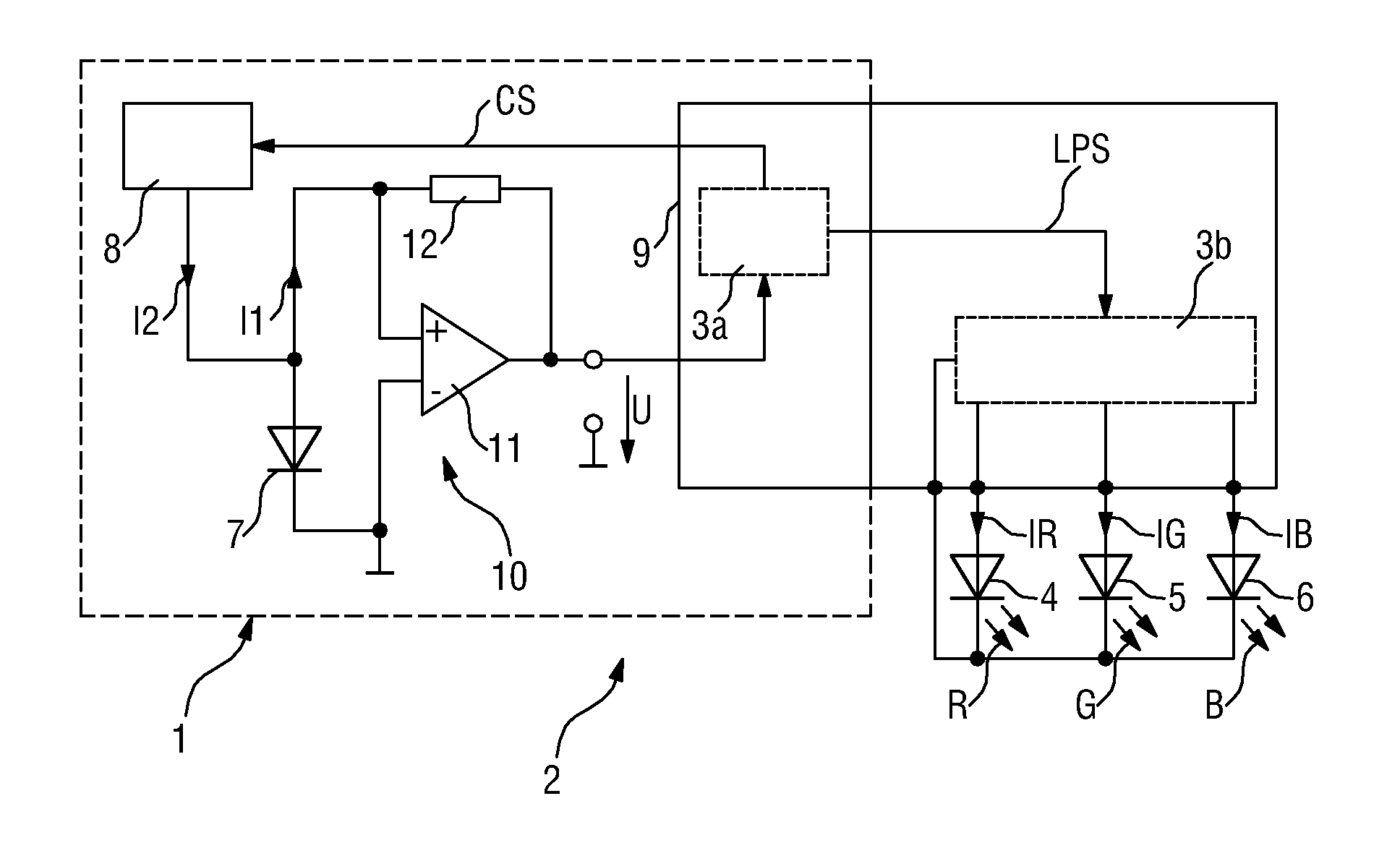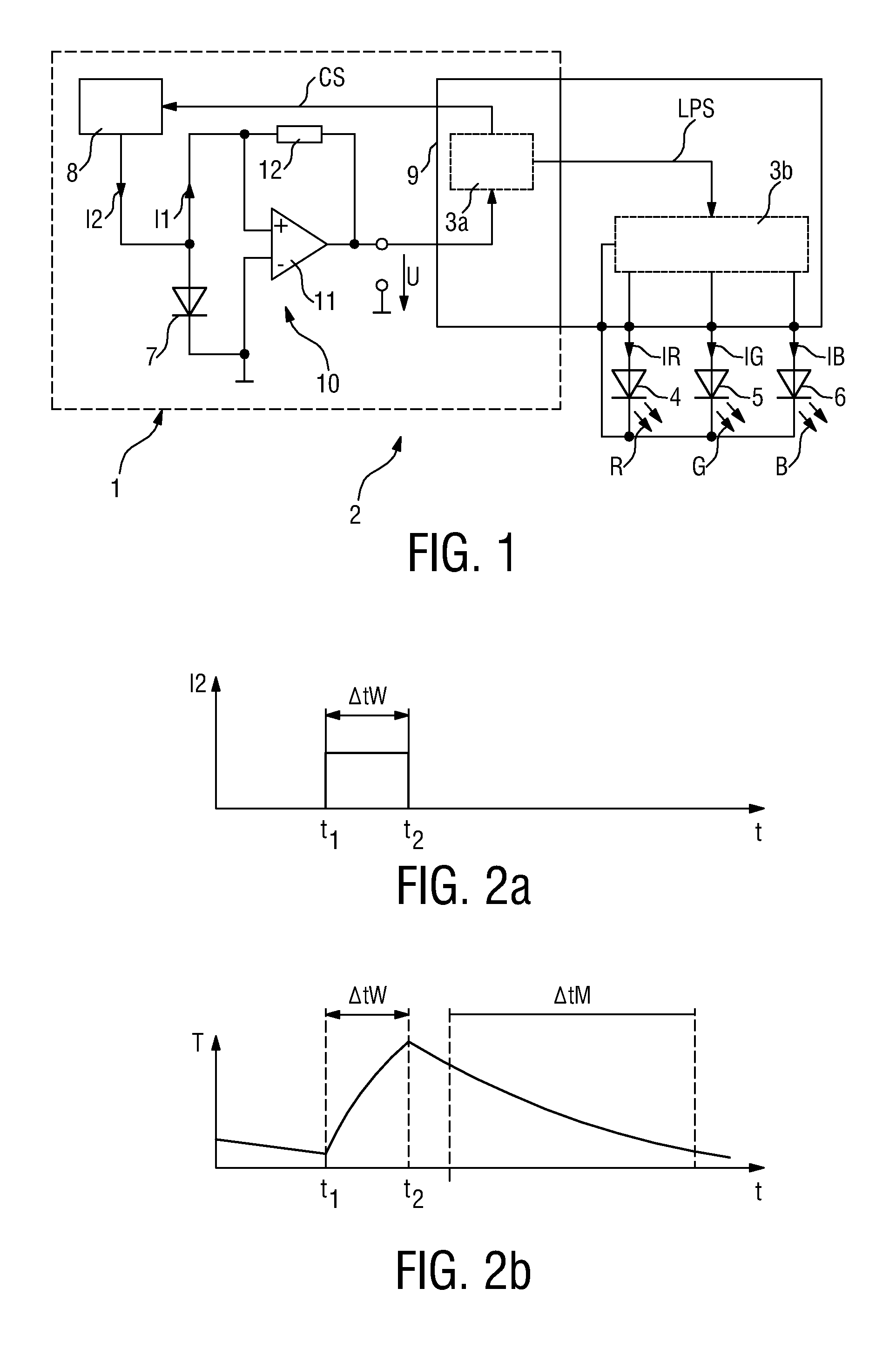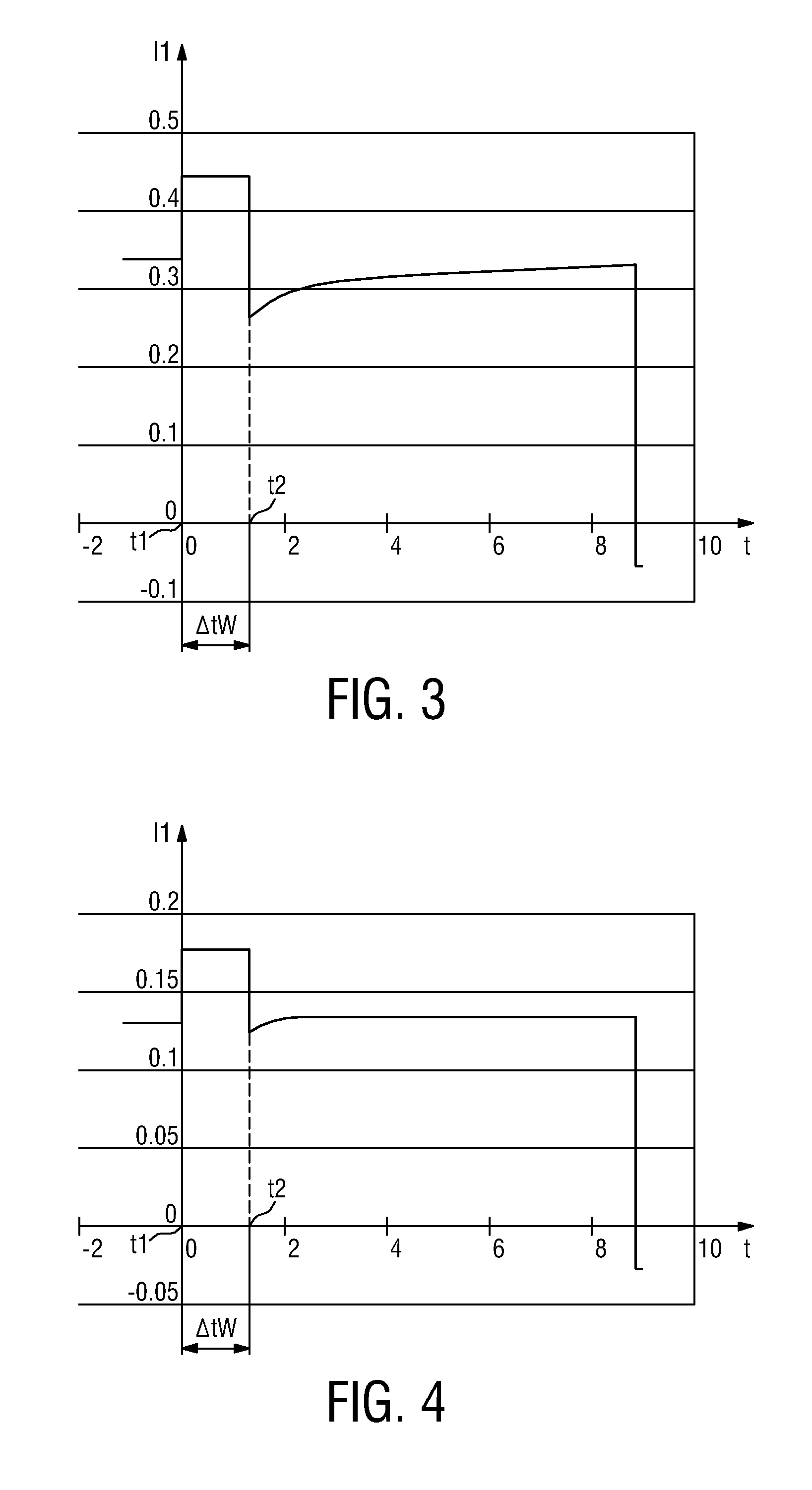Circuit for and a method of sensing a property of light
a technology of circuits and properties, applied in the direction of electric variable regulation, process and machine control, instruments, etc., can solve the problems of mismatch between actual color perception and desired color perception, the temperature of the heated part cannot be controlled, and the desired color and brightness cannot be obtained. , to achieve the effect of improving the control of the temperature of the heated part and increasing the temperature of the first circuit elemen
- Summary
- Abstract
- Description
- Claims
- Application Information
AI Technical Summary
Benefits of technology
Problems solved by technology
Method used
Image
Examples
Embodiment Construction
[0034]FIG. 1 shows a circuit 1 for sensing a property of light. The circuit 1 is used in a light emitting diode (LED) luminary 2. Such a LED luminary 2 may also be termed LED lamp. The luminary 2 comprises in addition to the circuit 1 a driver module 3b connected to a first LED 4 realized to emit red light R and a second LED 5 realized to emit green light G and a third LED 6 realized to emit blue light B. The driver module 3b is comprised in a controller 9, which in the present case is realized by means of a programmable device having signal processing-, data storage-, and LED driving-capabilities. Based on these controller features the driver module 3b is realized to generate driving-currents IR, IG, and IB, each for driving the respective LED 4, 5 and 6 in order to generate light having a particular intensity and causing a certain color impression at the human's eye. The setting of the driving-currents IR, IG, and IB is determined in dependency on the sensing response of the circu...
PUM
 Login to View More
Login to View More Abstract
Description
Claims
Application Information
 Login to View More
Login to View More - R&D
- Intellectual Property
- Life Sciences
- Materials
- Tech Scout
- Unparalleled Data Quality
- Higher Quality Content
- 60% Fewer Hallucinations
Browse by: Latest US Patents, China's latest patents, Technical Efficacy Thesaurus, Application Domain, Technology Topic, Popular Technical Reports.
© 2025 PatSnap. All rights reserved.Legal|Privacy policy|Modern Slavery Act Transparency Statement|Sitemap|About US| Contact US: help@patsnap.com



